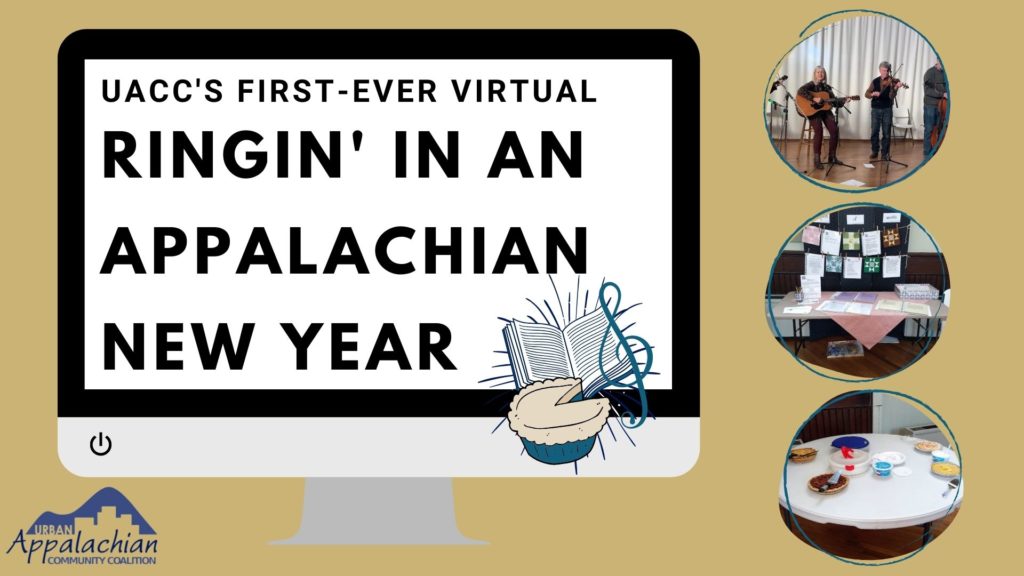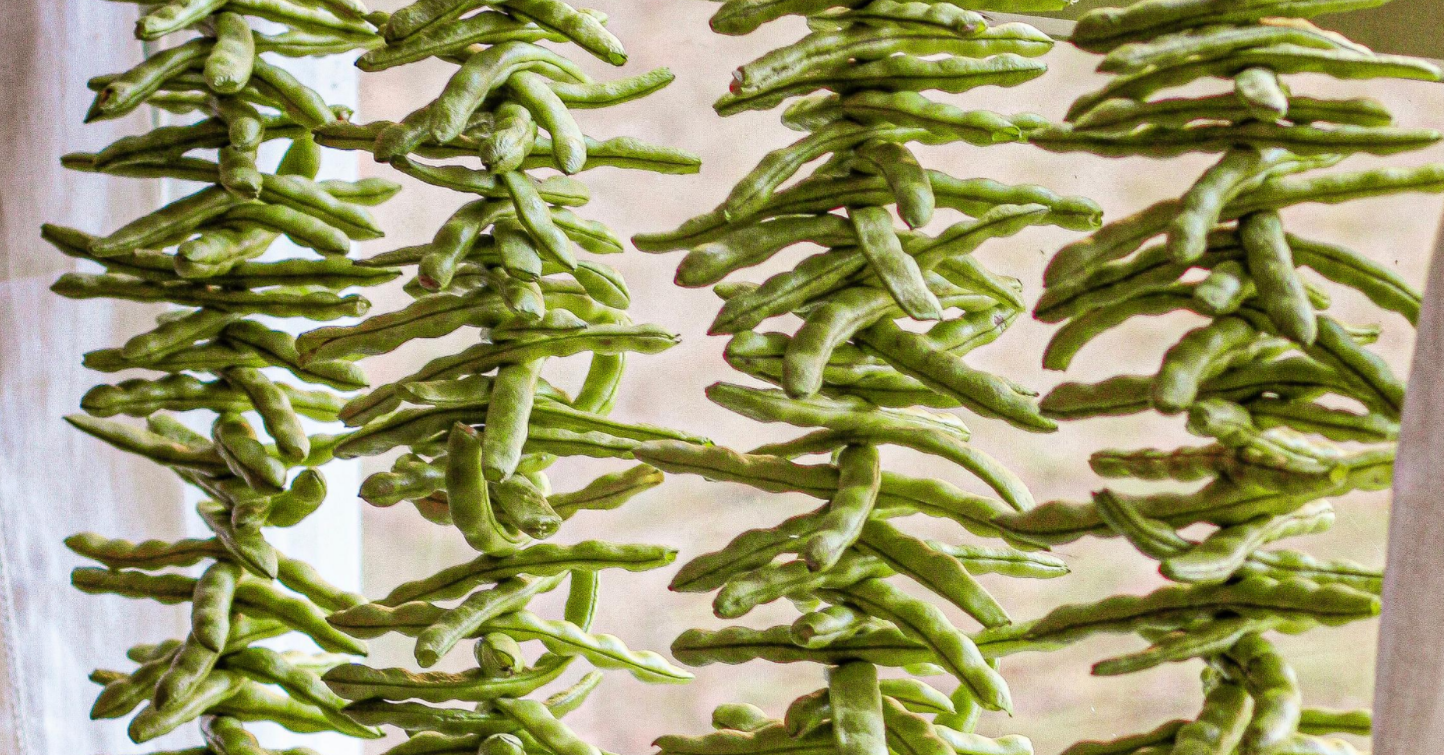One of the great benefits of writing about Appalachian foodways for the Urban Appalachian Community Coalition is learning about finding things are completely new to me. The fun of discovery is part of the process. So when I found out that this year’s all-virtual Ringin’ In an Appalachian New Year on January 17, 1-3 pm, was going to include a recipe swap, I knew it was time to explore. As much as I would like to say I knew all about shuck beans from childhood, the truth is, I happened upon this topic by doing some digging on Appalachian foodways, and I liked the word, “shucky beans.” I began with the story of a chef in Virginia who is building his menu out of traditional Appalachian foods. Travis Milton is the chef at Taste at the Nicewonder Inn in Richmond, Virginia, and after leaving his home, shedding his accent and wandering, he returned to his home state to open a restaurant that features traditional Appalachian food, and among the many things he includes on his menu are shuck beans.
Shuck beans, shucky beans, or leather britches seem simple enough. Pole beans, or any variety of green beans, are dried in the husk by stringing them together and letting them dry on a screen so they can be preserved. Drying, brining, and pickling were the main methods for preserving foods before canning methods were developed that were safe enough to keep foods for long periods of time. Dried apples and beans were a common feature of Appalachian cuisine long before the word “cuisine” was attached to vittles. Shuck beans go back a long way, but the origins of the shuck bean are a little murky.
Some attribute the practice of dried shuck beans to food drying methods southern Appalachians learned from indigenous people. Specifically, the Cherokee are said to have dried beans in this way, along with many other crops, and shared the shuck bean with settlers in the Appalachian regions. Others claim that the shuck bean has its origins in Germany. Getrocknete bohnen, as it was called in German, refers to the practice of drying any number of vegetables including the whole bean on a string. No matter the origin, the shuck bean is a staple of Appalachian foodways since before anyone can remember.
When I stumbled upon the shucky bean (that’s the name I like), I went immediately to UACC’s resident expert on all things culinary, Jeff Dey. Jeff sent me the text on shuck beans. According to Victuals by Ronni Lundy, “shuck beans refers to the method of preserving certain types of green beans by drying them in the pods. Rehydrated and cooked, the skins take on the texture of silk and nearly dissolve on the tongue, while the beans are tender, rich, and velvety.” You can check out Ronni Lundy’s shuck bean recipe here. I suppose the upshot here is that in true Appalachian style, a method of survival became a delicacy. The necessity of preserving every morsel of food gives rise to a culinary staple. From here, Jeff Dey sent me to core member Mike Maloney.
Mike remembers the practice of making shuck beans from his childhood. As Mike Maloney explains, “In the 40’s and 50s when I was a kid, families like ours only bought staples like flour and sugar from the store. In the summer we grew vegetables and ate game we killed in the forest and chickens we let run free in the yard.” In order to make some of these foods last through the winter, people dried vegetables. Mike continues, “Drying was one means of preserving food. We sliced apples and dried them on the roof. We used needle and thread to string beans to hang on the porch to dry. These were called shuck beans or shucky beans which, when we ate them in the winter, were considered a delicacy.” What strikes me about shucky beans is that they were not, or are not, something people learned to get down for bare survival, they are delicious.
The cultural history of things like shucky beans tells a story that is larger than that of culinary tradition. Shucky beans are part of a history that describes the survival and proliferation of culture. Whether we attribute the origins of the shucky bean to Native Americans, German immigrants, or a combination of the two, the Appalachian cultural history is one that transmits the foodways as a form of survival, a culinary art, and the way people cohered often against real adversity. Mike Maloney recalls the way families got together to bring the fruit of the land to the tables of everyone: “Neighbors would come and help with the slaughter and slicing of a hog on a good year and take a portion home with them. We could preserve the meat by canning, smoking or salting it. Women liked to show their wealth and skill by showing their closet full of colorful foods–the greens of beans and cucumbers, the reds of beets, tomatoes, jams and jellies. Poorer families just hoped their food would last til spring. Better off families would often share with poorer families sometimes in return for labor.” Somewhere at the intersection of survival, family stability, and community growth stood the shucky bean as one cog among many in the machine of family and culture.
The elements of any culture include many things. It is easy to focus on things like music and art because they stand out. But food and foodways are at the center of culture. Appalachian foodways are more than just recipes, they are one of the crucial ways Appalachian culture survives and continues to grow. Foodways are an important expression of who we are, and this is a central tenet of the mission of the Urban Appalachian Community Coalition. The things that go on the dinner table make up the elemental pieces of who we are and how urban Appalachians continue to flourish.

Do you have a favorite recipe to share? One of our favorite things about the annual Ringin’ In an Appalachian New Year is the potluck. Since we couldn’t figure out how to do a potluck online, but how about a recipe swap!? Click HERE to share your favorite potluck or other recipes, and we’ll share these virtually during the program in a Zoom breakout room where we can show the recipes and tell the stories behind them. Cooking demonstrations are most welcome during this time. Eating demonstrations too!
Mike Templeton is a writer, independent scholar, barista, cook, guitar player, and accidental jack-of-all-trades. Check out his profile in UACC’s new Cultural Directory. He lives in downtown Cincinnati with his wife who is a talented photographer. They spend their free time walking around the city snapping photos. She looks up at that the grandeur of the city, while Mike always seems to be staring at the ground.


I was born in Harlen, Ky. Haven’t had shucked beans in years. Do you know where I can buy some. Nobody knows what I’m talking about in Idaho.
Thanks.